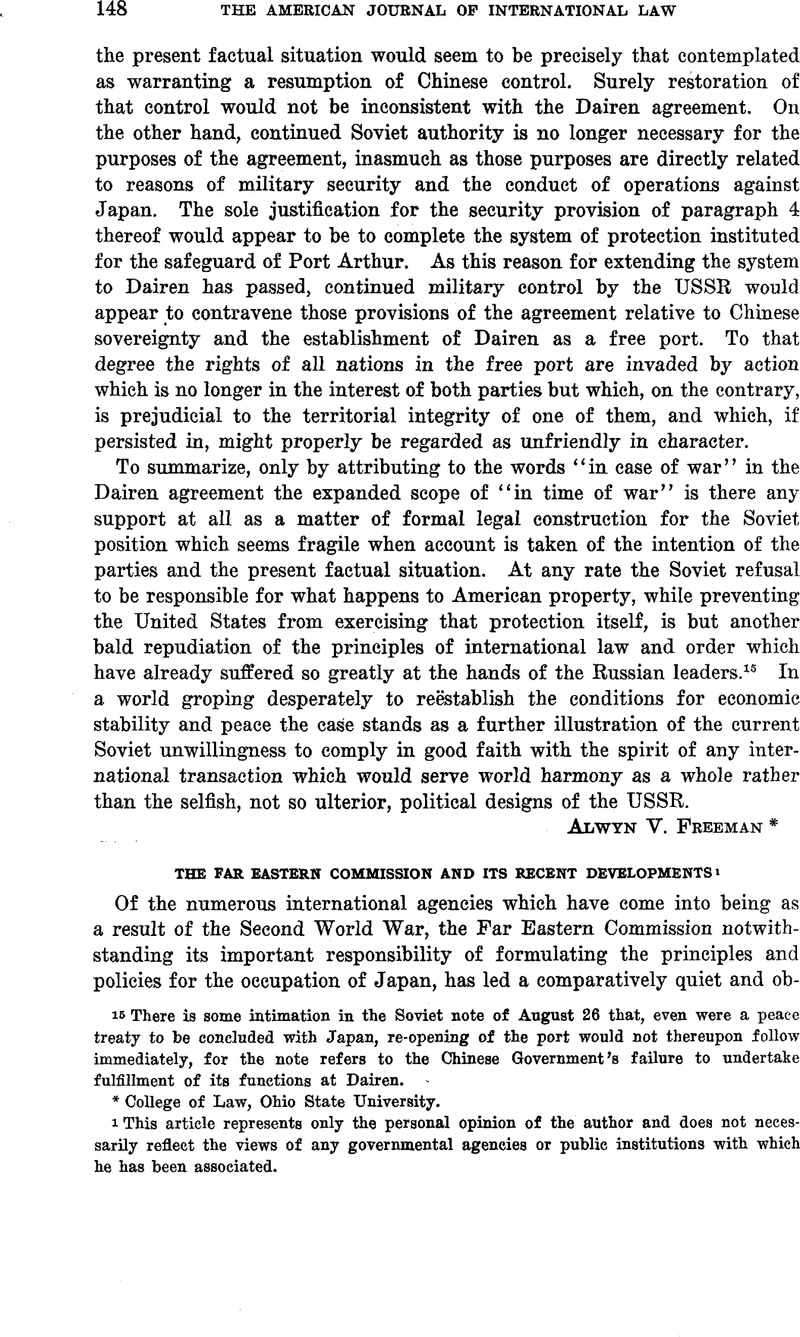Published online by Cambridge University Press: 20 April 2017

This article represents only the personal opinion of the author and does not necessarily reflect the views of any governmental agencies or public institutions with which he has been associated.
2 Department of State Bulletin, Vol. XIII, No. 340, pp. 1028–1029.
3 “Activities of the Far Eastern Commission, Beport by the Secretary General,” Department of State Publication 2888, Appendix 2, pp. 36–39; cited hereafter as Report.
4 Byrnes, James F.: Speaking Frankly, pp. 213–215.Google Scholar
5 Department of State, Press Release No. 812, October 29, 1945.
5a Report, p. 2.
6 Byrnes, pp. 217–218. It is interesting to note Mr. Byrnes’ statements that the USSR was originally opposed to including India in the membership of the Commission and that the British Government requested the inclusion of Australia on the Allied Council for Japan.
7 Report, p. 2, in which is stated that the Far Eastern Advisory Commission “was composed of representatives of Australia, Canada, China, France, the Netherlands, New Zealand, the Philippines, the United Kingdom, and the United States” and that “the Far Eastern Commission came into being, consisting of representatives of those powers which had been members of the Advisory Commission and a Soviet representative.” Thus no reference is made to India’s participation, although the names of India’s representatives are listed in the chapter on “Organization of the Commission” and in the roster of the present Far Eastern Commission personnel.
8 Report, p. 4.
9 Report, Appendix 2.
10 Report, Appendix 2.
11 Report, Appendix 3, Roster of present Far Eastern Personnel.
12 Report, Appendix 5, pp. 49–58.
13 Report, Appendixes 6 and 7, pp. 58–63.
14 Report, Appendix 8. Regarding the origin of the new Constitution, Harold S. Quigley seems to agree with D. N. Eowe that the draft of March 6, 1946, “was entirely the work of the Government Section of Scap”; see Quigley’s article entitled “Japan’s Constitutions: 1890 and 1947, in The American Political Science Review, October, 1947, p. 874, footnote 12.
15 Report, Appendices 9, 10 and 11.
16 Report, Appendix 12.
17 Report, p. 16.
18 Report, Appendices 24 and 23.
19 Report, Appendices 14–20.
20 Report, Appendices 28–29.
21 Report, Appendix 30.
22 Bisson, T. A.: Japan’s War Economy, pp. 198–99. These statistics were compiled by the Commerce and Industry Ministry, as cited in China Incident and Japan, China Incident Series, No. 3, Tokyo, 1937.Google Scholar
23 Byrnes, p. 218.